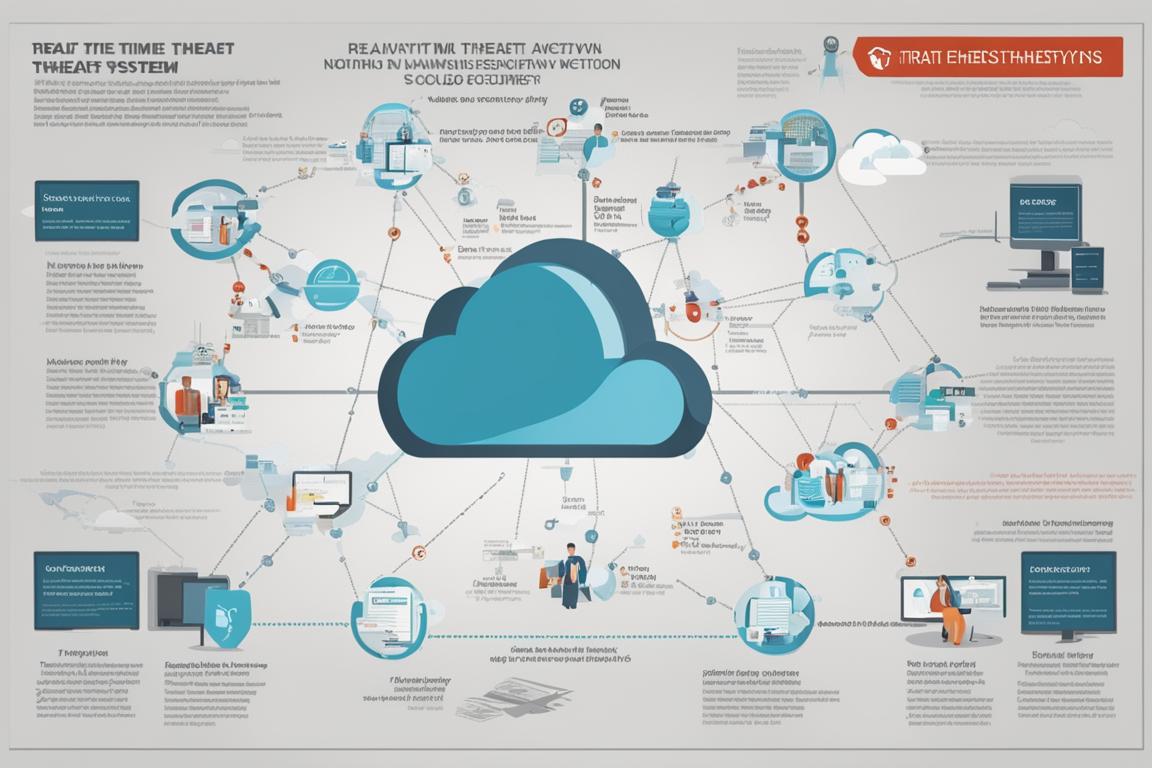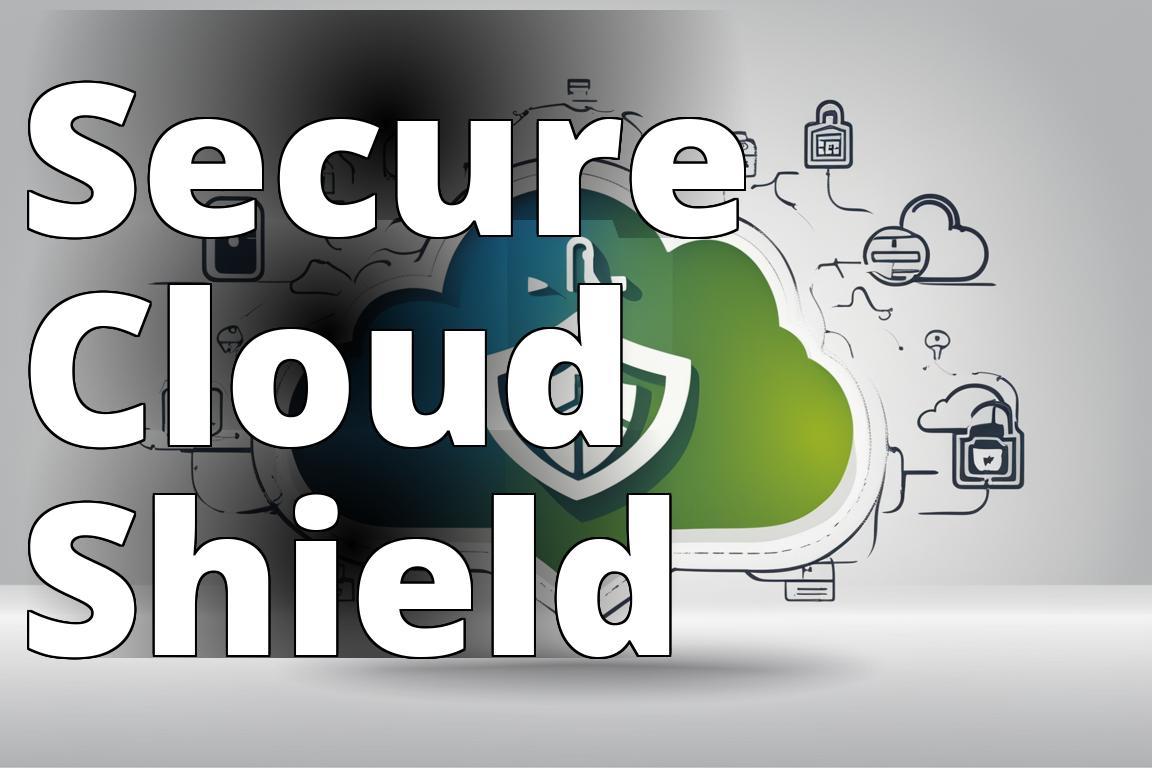Cloud security is not merely a component of IT infrastructure; it’s the backbone of digital trust in the modern business landscape. As a seasoned cybersecurity consultant, I’ve witnessed firsthand how evolving cloud technologies have reshaped the security protocols of numerous enterprises, from fledgling startups to Fortune 500 companies. This deep-dive explores the intricate layers of cloud security, distilling years of field experience and expert insights into a comprehensive guide.
Learn about Cloud Computing and Security
- Understand the concept and benefits of cloud security.
- Explore the challenges and best practices in cloud security.
- Discover essential tools, certifications, and compliance measures for cloud security.
What is Cloud Security?
Cloud security encompasses a myriad of strategies, tools, and protocols designed to protect data, applications, and the associated infrastructure of cloud computing. It is a critical subset of network security that has grown in importance as businesses increasingly rely on cloud services for their core operations.
In my early days of consulting, cloud security was often an afterthought, a secondary layer added to appease more cautious stakeholders. However, the explosive growth of cloud adoption has shifted security to the forefront of strategic planning. For instance, during a project with a leading retailer, the shift to a cloud-based inventory system necessitated a complete overhaul of their security posture to protect against data breaches and ensure compliance with consumer protection standards.
Insider Tip: Cloud security is as much about strategy as it is about technology. Start with a robust governance framework that defines clear policies and responsibilities.
How Does Cloud Security Work?
Understanding the mechanics of cloud security is essential for effectively implementing and managing it. Essentially, it functions through a layered approach that includes physical security, network security, and software controls.
- Physical Security: Managed by the cloud provider, this involves securing the physical machines and data centers where the cloud services operate.
- Network Security: This layer includes protections such as firewalls, intrusion detection systems, and encryption protocols to secure data in transit.
- Software Controls: These are configurations and software-based tools that manage access, monitor health, and protect against threats within the cloud environment.
During a consulting stint with a multinational bank, the integration of advanced intrusion detection systems in their cloud setup was pivotal. It not only safeguarded sensitive financial data but also provided real-time threat analysis, which is crucial in the high-stakes financial sector.

Learn more about the technical foundations of cloud security here.
Cloud Security Benefits
The adoption of cloud security offers manifold benefits that extend beyond mere compliance. Here are some key advantages:
- Scalability: Cloud environments can scale resources up or down as needed, and cloud security measures are designed to scale accordingly.
- Cost-Effectiveness: With cloud security, companies can save on the cost of maintaining physical servers and other hardware.
- Accessibility: Secure cloud services offer the benefit of accessing data from anywhere, which enhances business flexibility and productivity.
In one memorable project, implementing a scalable cloud security solution for a rapidly growing e-commerce platform enabled them to handle spikes in online traffic during sales events seamlessly, without compromising on security.
Cloud Security Challenges
Despite its benefits, cloud security is not without challenges. Data breaches, loss of data control, and inadequate compliance measures are just a few of the hurdles.
- Data Breaches: The most daunting threat is a data breach, which can expose sensitive information to unauthorized parties.
- Compliance: Ensuring that the cloud services are compliant with regulations such as GDPR, HIPAA, etc., continues to be a complex issue for many organizations.
Dealing with a data breach at a healthcare provider highlighted the critical need for robust incident response strategies in cloud environments. The breach not only compromised patient data but also exposed the provider to significant compliance penalties.
Cloud Security Best Practices
To navigate the complex landscape of cloud security, certain best practices are indispensable. Heres a rundown of the most critical ones:
1. Use a Secure Cloud Provider
Choosing a provider with a strong track record of security and compliance is the first critical step. During an audit for a tech startup, selecting a cloud provider with ISO 27001 certification was pivotal in securing venture capital due to the enhanced trust and security posture.
2. Encrypt Data
Encryption should be non-negotiable in any cloud security strategy. Encrypting data at rest and in transit ensures that even if data is intercepted, it remains unreadable.
3. Use Strong Passwords and Multi-Factor Authentication
Simple passwords are a hackers delight. Strong, complex passwords combined with multi-factor authentication fortify access controls significantly.
4. Monitor Your Cloud Environment
Continuous monitoring allows for the detection of unusual activity that could indicate a security threat. Implementing real-time monitoring tools was a game-changer for a client in the media sector, helping them prevent a potentially catastrophic data leak.
5. Keep Software Up to Date
Regular software updates close security gaps and reduce vulnerabilities. For a financial services firm, routine updates were crucial in protecting their cloud infrastructure from ransomware attacks.
6. Educate Your Team
Human error remains a significant vulnerability in cloud security. Regular training sessions on security best practices can mitigate this risk significantly.
Real-life Cloud Security Incident
Maria’s Experience
Maria, a small business owner, recently experienced a cyber attack on her cloud storage system. Despite having strong passwords, she fell victim to a phishing scam that compromised her login credentials. This incident highlighted the importance of not only using strong passwords and multi-factor authentication but also educating her team on recognizing and avoiding potential security threats. By sharing her experience and implementing better cloud security practices, Maria was able to prevent further breaches and protect her business data effectively.
Cloud Security Tools
To effectively implement these best practices, various specialized tools are essential:
1. Cloud Access Security Brokers (CASBs)
CASBs act as gatekeepers, allowing organizations to extend their security policies beyond their infrastructure. Implementing a CASB for a client provided visibility into shadow IT and significantly improved data security.
2. Cloud Security Posture Management (CSPM)
CSPM tools automatically detect and remediate risks across cloud configurations. This was crucial during a project where misconfigurations had led to data exposures.
3. Cloud Workload Protection Platforms (CWPPs)
CWPPs provide security for workloads across various environments, which was instrumental in securing hybrid cloud configurations for a manufacturing firm.
4. Cloud Security Monitoring and Threat Detection
Advanced monitoring tools detect potential threats in real-time, providing crucial early warnings. Such tools helped avert a major attack on an IT company, saving them from substantial financial and reputational damage.
Cloud Security Certifications and Compliance
Navigating the complex world of cloud security certifications and compliance can be daunting. Certifications like ISO 27001, SOC 2, and specific compliance requirements like GDPR and HIPAA are not just badges but essential frameworks that guide the security measures.
Working with a European client to achieve GDPR compliance not only safeguarded their data but also enhanced their marketability in the privacy-conscious EU market.
In conclusion, cloud security is a dynamic field that requires continuous attention and adaptation. From personal experiences and industry case studies, it’s clear that while the challenges are significant, the strategic application of best practices and tools can create robust defenses. As cloud technologies evolve, so too must our strategies to protect them, ensuring that cloud security remains a top priority in the ever-expanding digital frontier.
Questions & Answers
What is cloud security?
Cloud security is a set of measures to protect data stored in cloud computing environments.
How does cloud security work?
Cloud security works by implementing encryption, access control, and monitoring to safeguard data in the cloud.
Who should be concerned about cloud security?
Any individual or organization using cloud computing services should prioritize cloud security to protect sensitive data.
What are common objections to cloud security?
Some common objections include concerns about data privacy, compliance with regulations, and the risk of data breaches.
How can companies improve their cloud security?
Companies can enhance their cloud security by regularly updating security protocols, conducting audits, and providing employee training.
What role does encryption play in cloud security?
Encryption is crucial in cloud security as it ensures that data is securely transmitted and stored, protecting it from unauthorized access.
With a Ph.D. in Cybersecurity from Stanford University, Joshua Mitchell is a seasoned expert in cloud security. As a former cybersecurity consultant for Fortune 500 companies, Joshua Mitchell has a deep understanding of the intricacies of cloud computing and its security measures. Their research on data encryption and multi-factor authentication has been published in top cybersecurity journals, contributing significantly to the field. Joshua Mitchell is also a certified Cloud Security Professional (CCSP) and a member of the Cloud Security Alliance, actively involved in shaping best practices for cloud security. Through their extensive experience in conducting security audits and incident response planning, Joshua Mitchell provides valuable insights into the importance of securing cloud environments effectively.
